Don't wanna be here? Send us removal request.
Text

MQL Full Form: Key Insights
At Panda Bloggers, we dive into the full form of MQL, which stands for Marketing Qualified Lead. Understanding MQL is essential for businesses looking to optimize their marketing strategies. These leads are potential customers who have shown interest in your products or services, making them valuable targets. Discover how MQL can enhance your lead generation and conversion efforts today!
0 notes
Text
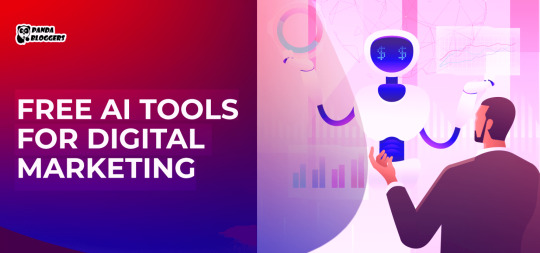
Elevate Your Campaigns: Free AI Tools
At Panda Bloggers, we believe in harnessing the power of technology to elevate your marketing campaigns. Explore our curated list of free AI tools designed to enhance your digital marketing efforts. From content creation to data analysis, these tools can streamline your processes, boost engagement, and improve results. Discover how to leverage AI for your next campaign today!
0 notes
Text
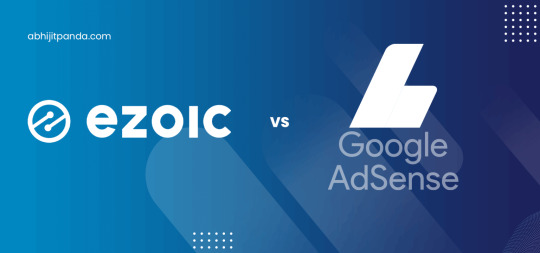
Choosing Between Ezoic and AdSense
When it comes to monetizing your website, choosing between Ezoic and AdSense can be challenging. Both platforms offer unique benefits and features tailored to different needs. At Panda Bloggers, we explore their differences in revenue potential, ease of use, and ad customization options. Dive into our analysis to find the right fit for maximizing your online earnings!
0 notes
Text

Yoast or SEOPress: A Quick Comparison
In the world of SEO plugins, Yoast and SEOPress stand out as top contenders. At Panda Bloggers, we delve into a quick comparison, examining their features, usability, and pricing. Whether you’re a beginner or a seasoned pro, choosing the right plugin can significantly impact your website's performance. Explore our insights to make an informed decision for your SEO strategy!
0 notes
Text

Marketing Strategies: Rural vs. Urban
At Panda Bloggers, we explore the distinct marketing strategies used in rural and urban areas. Understanding the differences in consumer behavior, preferences, and media consumption is crucial for crafting effective campaigns. While urban marketing often focuses on digital platforms, rural marketing may prioritize local outreach and community engagement. Join us as we delve into the nuances of these strategies for better targeting. Visit https://pandabloggers.com/difference-rural-urban-marketing/
0 notes
Text
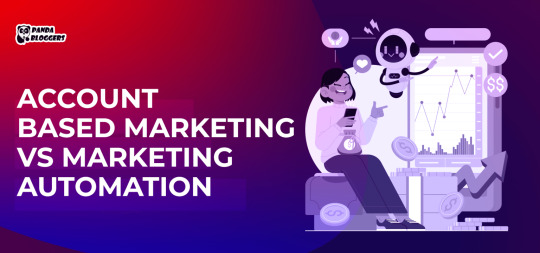
ABM vs Marketing Automation: A Comparative Guide
In our latest guide, "ABM vs Marketing Automation: A Comparative Guide," we explore the key differences between Account-Based Marketing (ABM) and marketing automation strategies. By understanding their unique strengths and how they can complement each other, we at Panda Bloggers help you choose the best approach for your business needs. Dive in to enhance your marketing strategy today!
0 notes
Text
Urban vs Rural Marketing
Understanding the difference between rural and urban marketing is essential for brands aiming to succeed in diverse markets. At Panda Bloggers, we believe that adapting your marketing approach to suit your audience’s location is a critical factor in driving success. Let's explore the key distinctions between these two marketing strategies and how they can influence your brand’s growth and performance. https://pandabloggersonline.weebly.com/blog/rural-vs-urban-marketing-key-differences-every-brand-should-know
0 notes
Text
SEO Press vs Yoast: Which Plugin Offers Better SEO Optimization?
When it comes to optimizing your website for search engines, choosing the right SEO plugin is crucial. Two of the most popular WordPress plugins in the market are SEOPress and Yoast. At Panda Bloggers, we understand how important it is to select a tool that not only boosts your site’s SEO but also aligns with your specific needs. In this blog, we’ll compare SEOPress vs Yoast to help you decide which one offers better SEO optimization for your website.

Ease of Use
Both SEOPress and Yoast offer user-friendly interfaces, but there are some differences in how they approach SEO optimization. Yoast is widely known for its simple setup wizard and traffic light system, making it easy for beginners to optimize their content. SEOPress, on the other hand, provides a more streamlined interface without too many distractions. At Panda Bloggers, we’ve found SEOPress to be ideal for users who prefer fewer notifications and a cleaner dashboard.
Features
When comparing SEOPress vs Yoast, we can see that both plugins offer a wide range of features to improve your site’s SEO. Yoast provides built-in content analysis, XML sitemap generation, and support for schema.org structured data. SEOPress offers similar features but also includes advanced tools like Google Analytics integration, breadcrumbs, and better control over schema settings.
One standout feature of SEOPress is the ability to manage 301 redirects and broken links directly from the plugin, which is perfect for ensuring that your website’s SEO remains intact. At Panda Bloggers, we appreciate SEOPress for its advanced tools while Yoast remains a strong choice for those who prefer out-of-the-box features.
Pricing
Both SEOPress and Yoast offer free versions with essential SEO features. However, when comparing SEO Press vs Yoast for premium options, SEOPress comes out as the more affordable choice. With a flat annual fee that covers unlimited sites, SEOPress offers greater value for businesses managing multiple websites. Yoast, on the other hand, charges per site, which can become expensive if you manage multiple domains. At Panda Bloggers, we always recommend considering your budget before deciding which plugin suits your needs best.
Conclusion
Ultimately, the choice between SEOPress vs Yoast comes down to your specific requirements. SEOPress offers a cleaner, more affordable solution with advanced features, while Yoast remains a user-friendly option for beginners. At Panda Bloggers, we believe both plugins are great choices, but SEOPress might offer better SEO optimization if you’re looking for more control and flexibility
0 notes
Text
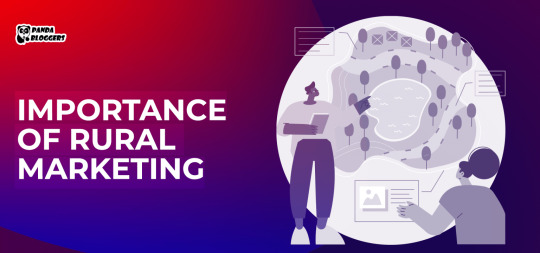
The Importance of Rural Marketing for Brands
At Panda Bloggers, we understand the importance of rural marketing in reaching untapped markets. Rural areas hold immense potential for brands to expand their customer base, drive growth, and build strong local connections. Effective rural marketing strategies ensure your brand reaches the heart of these communities.
0 notes
Text
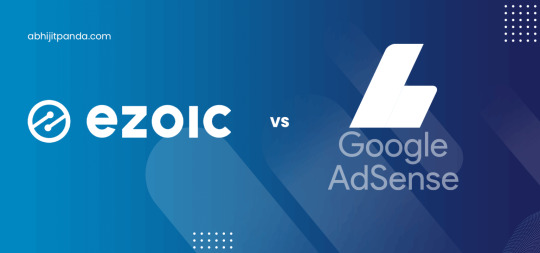
Ezoic vs AdSense: Complete Comparison Guide
At Panda Bloggers, we explore the key differences between Ezoic vs AdSense for maximizing your website's ad revenue. While AdSense is beginner-friendly with quick setup, Ezoic offers advanced optimization features for higher earnings. Discover which platform suits your needs best by staying informed with our expert tips. Reach out at pandabloggers1@gmail.com for more insights!
0 notes
Text
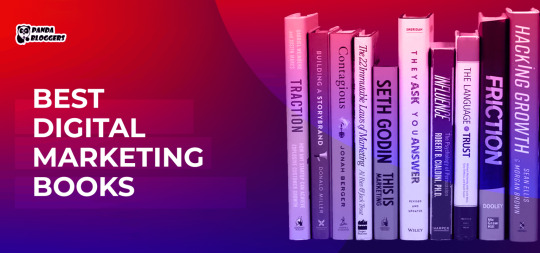
Best Digital Marketing Books for Success
Looking to elevate your digital marketing skills? Our curated list of the best digital marketing books offers expert insights, proven strategies, and cutting-edge trends to help you succeed. Whether you're a beginner or a seasoned pro, these books are must-reads for growth. Explore the collection today with Panda Bloggers. Contact us at pandabloggers1@gmail.com!
0 notes
Text

Benefits Of Account-Based Marketing vs. Marketing Automation
Discover the differences between account-based marketing (ABM) and marketing automation with Panda Bloggers. Learn how these strategies can elevate your marketing efforts, from personalized targeting with ABM to streamlined processes through automation, helping you choose the best approach for your business success.
0 notes
Text
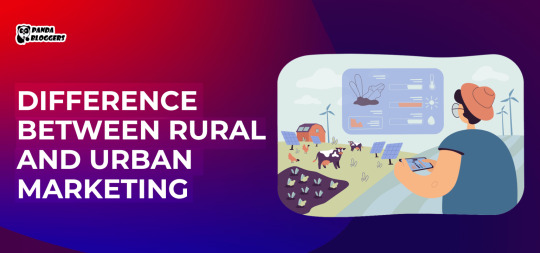
Difference Between Rural and Urban Marketing
Explore the key differences between rural and urban marketing with Panda Bloggers. Learn how consumer behaviors, purchasing power, and strategies vary across these markets, and discover how to tailor your approach to maximize success in both urban and rural areas.
0 notes
Text
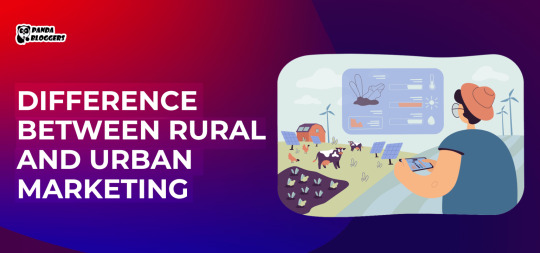
The Differences Between Rural and Urban Marketing
Explore the key distinctions between rural and urban marketing strategies. This blog delves into consumer behavior, preferences, and effective approaches tailored for each market. By understanding these differences, businesses can optimize their marketing efforts and connect better with their target audiences in both settings.
0 notes
Text
The Power of Rural Marketing: Strategies for Success in Emerging Markets
At Panda Bloggers, we believe that the importance of rural marketing cannot be overstated. As businesses seek to expand their reach, rural markets present an incredible opportunity for growth. With a significant portion of the population residing in these areas, understanding the unique dynamics of rural consumers is essential for brands aiming for success.
First and foremost, we must recognize that rural markets have distinct characteristics compared to urban ones. Consumers in rural areas often prioritize value, quality, and utility over luxury. To tap into these markets, we need to craft our marketing strategies accordingly. This means developing products that cater to the specific needs and preferences of rural customers. At Panda Bloggers, we recommend conducting thorough market research to identify local demands and tailor our offerings to meet them.
Moreover, building relationships is crucial in rural marketing. Trust plays a significant role in purchasing decisions for consumers in these areas. We can enhance our presence by engaging with local communities through events, sponsorships, and partnerships. This not only fosters goodwill but also reinforces the importance of rural marketing as a means to establish brand loyalty.
Another effective strategy is leveraging digital platforms. Although rural areas may not have the same level of internet penetration as urban regions, the use of mobile phones is rapidly increasing. At Panda Bloggers, we suggest using targeted social media campaigns to reach rural consumers, showcasing how our products can improve their lives. Creating localized content that resonates with their experiences will help us connect on a deeper level.
Additionally, we should consider the distribution channels we employ. Traditional retail outlets may dominate rural markets, but innovative approaches, such as direct selling or utilizing local influencers, can enhance our reach. We can train local entrepreneurs to sell our products, creating jobs and building brand ambassadors in the community. This not only highlights the importance of rural marketing but also promotes economic development.
In conclusion, the power of rural marketing lies in its ability to unlock new opportunities for growth. At Panda Bloggers, we understand that by recognizing the unique needs of rural consumers and implementing targeted strategies, we can achieve significant success in these emerging markets. The importance of rural marketing is clear, and by embracing it, we can foster lasting relationships and drive our brands forward. Let’s work together to harness this potential and make a meaningful impact in rural communities.
0 notes
Text
Ad Monetization Strategies: How to Optimize Earnings with Ezoic and AdSense
At Panda Bloggers, we understand that monetizing our blog effectively is crucial for sustainable growth. With numerous options available, two of the most popular platforms are ezoic and adsense. While both offer distinct advantages, mastering ad monetization strategies can significantly impact our earnings. In this blog, we’ll explore effective techniques for optimizing our revenue through these platforms, ensuring we make the most out of our content.
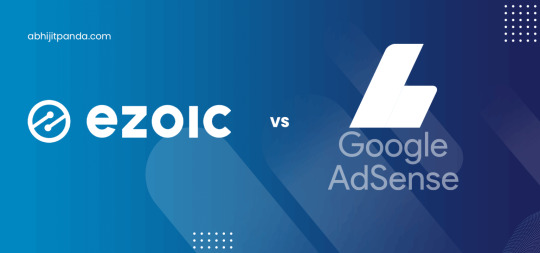
1. Choose the Right Platform: Ezoic vs. AdSense
The first step in maximizing our ad earnings is to evaluate which platform suits our needs best. Ezoic offers advanced features like machine learning for ad placement and testing, while AdSense provides a straightforward interface with fewer options. We should consider our traffic volume, audience demographics, and the type of content we produce. If we have a high volume of traffic, Ezoic’s capabilities might help us earn more. However, for new blogs, starting with AdSense could be easier while we grow our audience.
2. Optimize Ad Placement
Ad placement is one of the most critical factors in maximizing our earnings. We should experiment with different positions on our site to determine what works best. Ezoic provides automatic ad placement options that allow us to test various locations and formats. According to research, ads placed above the fold tend to perform better, but we should also consider user experience. We must ensure that our content remains accessible and enjoyable, avoiding overwhelming our visitors with too many ads.
3. Leverage A/B Testing
A/B testing is a powerful tool that both Ezoic and AdSense offer. By creating variations of our ad setups, we can analyze performance and optimize for better results. For example, we can test different ad sizes, colors, and formats to see what resonates with our audience. As we gather data, we can make informed decisions about our ad strategies, ultimately increasing our earnings.
4. Focus on Quality Content
While ads are essential for monetization, quality content should remain our primary focus. By producing engaging, valuable articles, we attract more visitors, leading to higher ad impressions. We should consider what our audience is interested in and create content that addresses their needs. Consistent, high-quality content will encourage return visits, enhancing our chances of earning more through both Ezoic and AdSense.
5. Monitor Analytics
Both Ezoic and AdSense provide detailed analytics that can guide our monetization strategies. By regularly reviewing these insights, we can identify which ads perform best, understand our audience's behavior, and make necessary adjustments. We should pay attention to metrics like click-through rates (CTR) and earnings per thousand impressions (EPM) to fine-tune our strategies for maximum revenue.
6. Utilize Responsive Ads
With the increasing use of mobile devices, we must ensure our ads are responsive and adaptable to different screen sizes. Both Ezoic and AdSense offer responsive ad formats, which can significantly improve user experience and potentially increase our earnings. By prioritizing mobile optimization, we can reach a broader audience and improve engagement.
Conclusion
In conclusion, at Panda Bloggers, we believe that optimizing ad monetization strategies with Ezoic and AdSense is essential for maximizing our earnings. By carefully evaluating our platform choices, optimizing ad placements, conducting A/B tests, focusing on quality content, monitoring analytics, and utilizing responsive ads, we can effectively enhance our revenue. As we navigate the landscape of ad monetization, let’s keep in mind the differences between Ezoic vs. AdSense and choose the strategies that align best with our goals. Happy blogging!
0 notes
Text
How to Combine Account-Based Marketing and Marketing Automation for Maximum Impact
At Panda Bloggers, we understand the growing challenge of driving personalized and efficient marketing campaigns in today’s competitive landscape. Both account-based marketing (ABM) and marketing automation are powerful tools that can significantly enhance our marketing efforts. But when combined strategically, they can take our results to a whole new level. In this blog, we’ll explore practical strategies to merge these two approaches and achieve maximum impact in our campaigns.
What is Account-Based Marketing (ABM)?
ABM is a highly targeted marketing strategy where we focus on identifying key accounts and building personalized experiences for them. Rather than targeting a wide audience, we align our resources toward engaging specific accounts that hold the most value for our business.
What is Marketing Automation?
Marketing automation, on the other hand, streamlines our repetitive marketing tasks like sending emails, lead nurturing, and tracking customer interactions. This allows us to efficiently manage and personalize communications at scale.

Now, the real magic happens when we combine account-based marketing vs marketing automation into a cohesive strategy. Let’s dive into how we can do just that.
1. Align Sales and Marketing Teams
To make the most out of ABM and marketing automation, we need to ensure that both our sales and marketing teams are aligned. In ABM, the marketing team identifies key accounts and develops tailored content, while the sales team builds relationships with decision-makers. With marketing automation, we can automate content distribution and outreach, ensuring that every touchpoint is personalized.
By integrating both, our sales and marketing teams can work hand-in-hand, using data to identify high-value accounts and consistently engage them through automated campaigns that feel personal.
2. Use Automation for Targeted Account Nurturing
Marketing automation allows us to stay connected with our target accounts throughout the entire buyer’s journey. For example, we can create email workflows that deliver highly relevant content based on the specific interests and behaviors of our target accounts.
By using automation tools, we can build nurturing campaigns that deliver the right content to the right account at the right time. This approach ensures that our efforts remain personalized and targeted—hallmarks of account-based marketing vs marketing automation.
3. Personalize Content at Scale
Personalization is key when merging ABM with marketing automation. We can use automation to serve personalized content based on account segments. For instance, we can dynamically customize emails, landing pages, and ads based on a prospect’s industry, company size, or their position in the buying process.
By using personalized templates in our automated systems, we ensure that every piece of content speaks directly to the specific needs of our target accounts, increasing engagement and conversion rates.
4. Measure and Optimize Engagement
One of the major benefits of using account-based marketing vs marketing automation together is the ability to measure and optimize engagement more effectively. With marketing automation, we can track how accounts interact with our content—whether they’re opening emails, clicking links, or visiting landing pages.
By analyzing this data, we can determine what’s working and what needs improvement. This allows us to continuously optimize our campaigns, making adjustments in real-time to ensure we’re always delivering maximum value to our target accounts.
5. Scale Without Losing the Personal Touch
One of the greatest advantages of integrating marketing automation into ABM is the ability to scale our efforts without sacrificing personalization. Automation enables us to manage hundreds of accounts simultaneously, providing each one with tailored messaging and content.
At Panda Bloggers, we can set up personalized sequences for each stage of the funnel, ensuring that our prospects receive timely, relevant content based on their actions and interactions. This level of automation allows us to grow our marketing efforts without losing the personal touch that ABM demands.
Conclusion
Combining account-based marketing vs marketing automation is a powerful strategy that allows us to maximize our marketing efforts by targeting high-value accounts with personalized messaging while scaling our campaigns through automation. At Panda Bloggers, we believe that the synergy between these two approaches enables us to achieve more meaningful engagement, greater efficiency, and ultimately, higher returns on our marketing investment.
By aligning our sales and marketing teams, using automation for targeted nurturing, personalizing content at scale, measuring engagement, and optimizing our approach, we can unlock the full potential of ABM and marketing automation. Let’s start combining these strategies today and watch our marketing impact soar!
0 notes